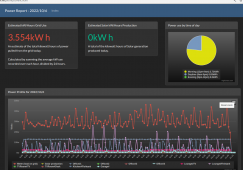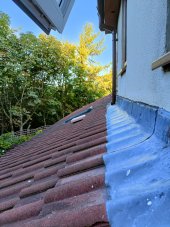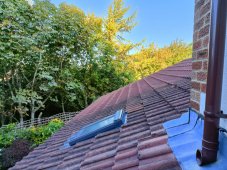megatron-uk
New Member
- Joined
- Oct 6, 2022
- Messages
- 6
Hi folks,
Starting to dip my toes in the water of building a DIY solar system to offset some of the base electrical load of our property.
At the moment I have a liberal spread of power monitoring sockets (Tasmota based, from mylocalbytes) around the house at some of the hot-spots to identify what is using power, as well as an Efergy Elite monitor clamped to the main meter. I'm capturing both sets of data (the Tasmota sockets over wifi, the Efergy meter and some legacy Energenie devices over 433MHz radio) using a Pi, logging 5 minute averages and graphing results on a regular basis.
As a result, I have a fairly good understanding of what my average base load is throughout the week, for the morning, day and evening. I mainly work from home, with the odd day in the office, my wife is the opposite of that.
I'm looking at an average, daytime base load of around 350-400w. That comprises my workstation and network equipment, fridge/freezer, two small fish tanks, battery chargers in the garage trickle charging a car, and other assorted electronics going (radio, speakers, phone chargers etc).
I'd like to be able to offset as much of that daytime 'chunk' of load as possible with solar. I am not interested in trying to sell back additional capacity, nor am I (at this time) looking to have battery storage. I want to maximise the impact on my daytime use as cheaply as possible.
I was considering a small pv setup of perhaps four second hand 220-250w panels, along with a small inverter/controller of between 1-2kW.
Initially I was interested in the SUN GTIL-1000/2000 because of the grid limiting functionality, and the ease of installation.... but I understand that these are not compliant with UK legislation, since they do not meet any of the recent specs.
Is there a cheap option in the 1-2kW range, with MPTT, grid-tie features, with export limitation that meets UK specs? Ideally, to keep things simple, I don't want to have to worry about feeding anything back into the external grid.
Realistically, I want to do this all DIY, and including all equipment, don't really want to spend over £1000.
Starting to dip my toes in the water of building a DIY solar system to offset some of the base electrical load of our property.
At the moment I have a liberal spread of power monitoring sockets (Tasmota based, from mylocalbytes) around the house at some of the hot-spots to identify what is using power, as well as an Efergy Elite monitor clamped to the main meter. I'm capturing both sets of data (the Tasmota sockets over wifi, the Efergy meter and some legacy Energenie devices over 433MHz radio) using a Pi, logging 5 minute averages and graphing results on a regular basis.
As a result, I have a fairly good understanding of what my average base load is throughout the week, for the morning, day and evening. I mainly work from home, with the odd day in the office, my wife is the opposite of that.
I'm looking at an average, daytime base load of around 350-400w. That comprises my workstation and network equipment, fridge/freezer, two small fish tanks, battery chargers in the garage trickle charging a car, and other assorted electronics going (radio, speakers, phone chargers etc).
I'd like to be able to offset as much of that daytime 'chunk' of load as possible with solar. I am not interested in trying to sell back additional capacity, nor am I (at this time) looking to have battery storage. I want to maximise the impact on my daytime use as cheaply as possible.
I was considering a small pv setup of perhaps four second hand 220-250w panels, along with a small inverter/controller of between 1-2kW.
Initially I was interested in the SUN GTIL-1000/2000 because of the grid limiting functionality, and the ease of installation.... but I understand that these are not compliant with UK legislation, since they do not meet any of the recent specs.
Is there a cheap option in the 1-2kW range, with MPTT, grid-tie features, with export limitation that meets UK specs? Ideally, to keep things simple, I don't want to have to worry about feeding anything back into the external grid.
Realistically, I want to do this all DIY, and including all equipment, don't really want to spend over £1000.








